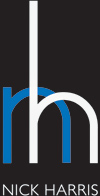Three wins in one day at Assen – they earned a summer break
The summer break has arrived. The riders and teams deserve it, but it has not always been the case in the past when fighting for very survival.
Most riders competed in more than one class. The factory riders because they were told to by their employers. The privateers to gain more start money to enable them to have enough diesel and food to struggle to the next venue. Of course, the World Championship was a lot shorter than the 20-plus worldwide venues these days. The riders supplemented their paltry incomes by racing at non-championship and often extremely dangerous venues. These lucrative races were between Grands Prix and often during the summer break.
It was such a very different world and there is no better place than Assen to show just why. Compare the so different life and times of a Grand Prix rider. The Dutch Cathedral is the only circuit on the 2022 calendar that was a venue in that very first World Championship season way back in 1949. As the riders streamed through the legendary and much-changed Strubben corner on Sunday, I wondered just what those bygone heroes would have thought of the super-slick show their modern-day counterparts put on week after week. One thing for certain is they would be surprised and, in some cases, happy at the number of kilometres a modern-day Grand Prix rider puts in over a weekend and especially on race day.
On Sunday, MotoGP™ winner Pecco Bagnaia, riding for the Ducati Lenovo Team, completed twenty-six laps of the 4.542km Assen circuit, a race distance of 118.092km. Also, the Italian only competed in one race on Sunday. It used to be so very different with two great World Champions illustrating just why.
In 1964 Jim Redman won the 125, 250 and 350cc races for Honda at Assen on Saturday, June 27th. Three Grand Prix wins in one day was unheard of even in those days. Mike Hailwood had won three TT races in the Isle of Man in one week, but three in one day was a record-breaker. Two years later in 1966 Hailwood won three Grands Prix on the old Brno circuit in Czechoslovakia and then repeated the dose at Assen a year later.
Like Redman, he won all three Grands Prix on Honda machinery. First, the 250cc race after fighting off the challenge of Bill Ivy on the two-stroke Yamaha. Next up, the 350cc and finally the 20-lap 500cc race and the second showdown of the day with the MV Agusta of Giacomo Agostini. In all, Hailwood had raced in a single day to three wins over 57 laps of the 7.7km Assen circuit. It was a total distance of a staggering 439km, which he completed in a time of three hours, three minutes, 0.07s. I think, and I am sure he would have enjoyed, a beer or two that evening.
At the start of the World Championship races were longer than today, a lot longer. Once again Assen produces the perfect illustration. In 1950 Italian Umberto Masetti won the longest ever race at the legendary venue. Riding the Gilera he won the 18-lap 500cc race around the 16.536km circuit in two hours, 0m, 43.2s. The total distance was 297.6km for a single race win. Masetti went on to win the World Championship in the six-race title chase.
Marc Marquez contemplated the idea of competing in both the Moto2™ and MotoGP™ World Championships. The long Grand Prix schedule and practice and qualifying sessions made the dream impossible. The last rider to win two Grands Prix in one day was Jorge Martinez in 1988. The Spanish World Champion won the 80 and 125cc races at Brno. Three years earlier Freddie Spencer was crowned 250 and 500cc World Champion. In 1985 Freddie turned back the clock in the 12-round Championship to ride in both classes. At Mugello, he stood on the top step of the podium after winning the 500cc race as the 250cc machines were being wheeled to the grid. Second-placed Eddie Lawson turned to him after ‘The Star-Spangled Banner’ anthem and said, “rather you than me”. Freddie smiled and won the 250cc race to become the first 250 and 500cc Grand Prix winner since Jarno Saarinen 12 years earlier.
The great thing about MotoGP™ today is that it has been prepared to make changes and embrace those changes to keep the sport so vibrant and popular. We have the greatest respect and admiration for those riders who have graced the famous Assen tarmac for the last 74 years. They laid down and built the very foundations of what we witness today. They certainly deserved a summer break, but rarely took it because to survive they had to race.

